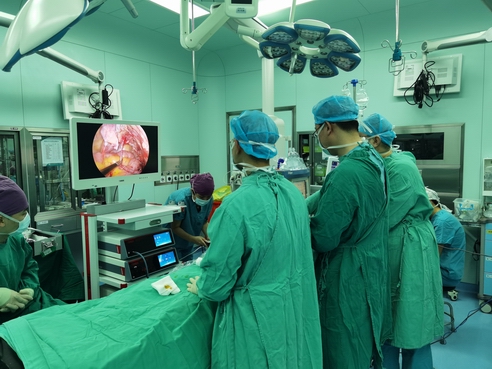Advancements in Laparoscopy Devices: Improving Surgical Outcomes
Laparoscopy is a minimally invasive surgical technique that uses a laparoscope, a thin, flexible instrument with a light and camera attached to it, to perform procedures within the abdominal cavity. This technique has revolutionized surgical practice by reducing the need for large incisions, reducing pain, and shortening recovery times for patients.

Over the years, advancements in laparoscopy devices have enabled surgeons to perform increasingly complex procedures. One such advancement is the development of more advanced laparoscopic instruments. These instruments, such as graspers, scissors, and dissectors, are now available in a range of sizes, shapes, and designs, allowing for greater precision and flexibility during surgery.
Another significant advancement in laparoscopy devices is the integration of robotic systems into surgical practice. Robotic laparoscopy devices provide surgeons with increased precision, dexterity, and control over the instruments. These devices use sophisticated algorithms to convert the surgeon's hand movements into precise movements of the robotic arms, allowing for greater accuracy and safety during surgery.
Additionally, the development of energy-based laparoscopy devices, such as electrosurgical instruments, has revolutionized surgical practice. These devices use energy to cut, coagulate, and seal tissue, reducing the risk of bleeding and improving surgical outcomes. The use of energy-based laparoscopy devices has also enabled surgeons to perform procedures that were previously considered too complex or risky to perform laparoscopically.
Moreover, advances in imaging technology have also greatly enhanced laparoscopy devices. High-definition cameras now provide surgeons with clearer and more detailed images, allowing for greater precision during surgery. Additionally, fluorescence imaging technology, which highlights blood vessels and tumors, is now being integrated into laparoscopy devices, allowing surgeons to perform more precise procedures with greater accuracy and safety.
In conclusion, advancements in laparoscopy devices have revolutionized surgical practice, making it safer, less invasive, and more effective. The development of more advanced laparoscopic instruments, the integration of robotic systems, energy-based devices, and improvements in imaging technology have all contributed to the evolution of laparoscopy devices. These advancements have improved surgical outcomes and have enabled surgeons to perform increasingly complex procedures with greater accuracy and safety.



Leave a message